
Laser Technology: The Future of Space-Based Communications
- SPACE DATA AS A SERVICE
- SPACE PRODUCTS & COMPONENTS
Laser communications—or free-space optical communication (FSO)—are poised to revolutionize how we connect with space. As demand for faster, more secure data transfer accelerates alongside the growth of global connectivity and Earth observation missions, laser communications offer a powerful solution to the bottlenecks of traditional radio frequency (RF) systems.
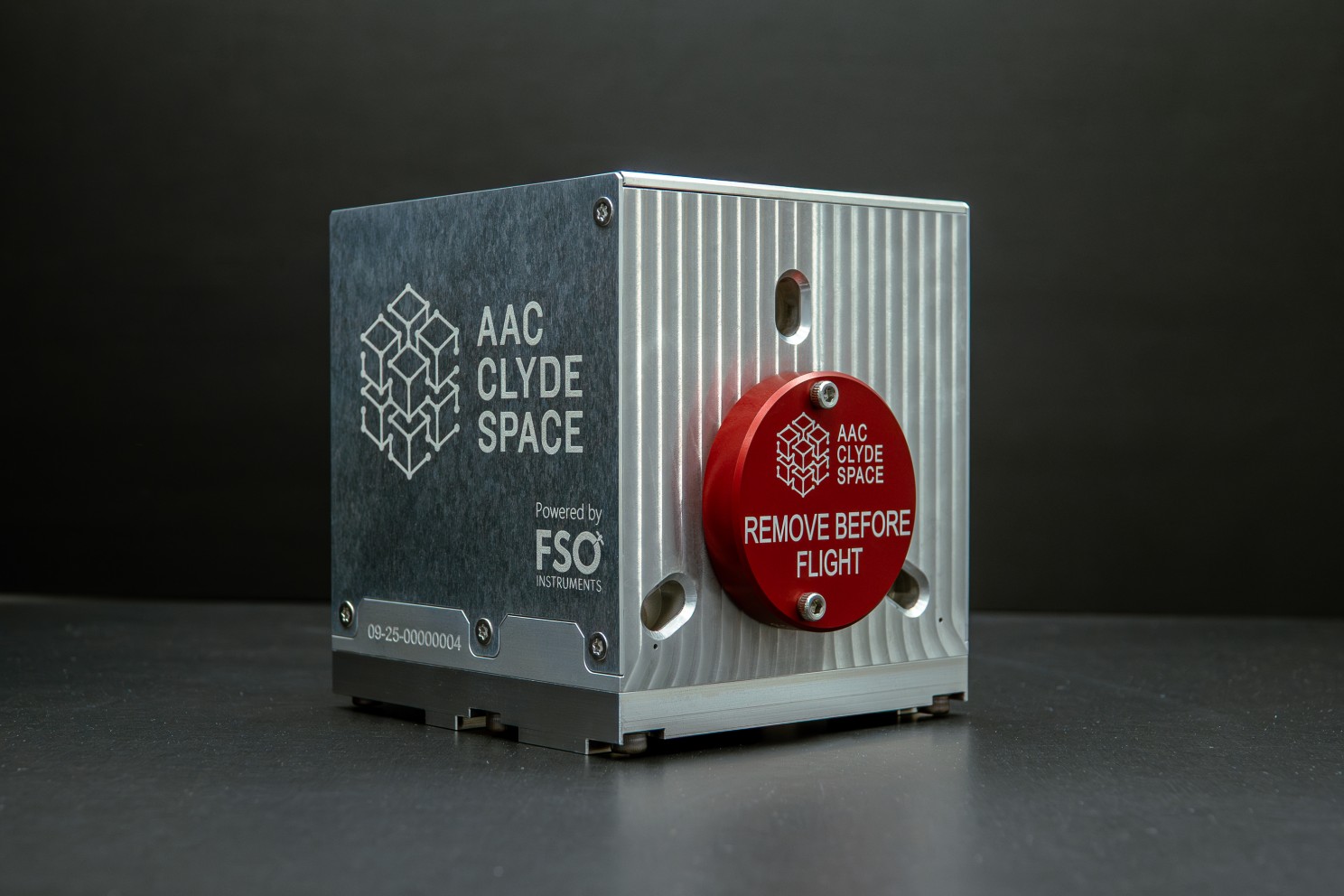
Why Laser Communications Are a Step-Change in Capability
Laser communication can transmit 100 to 1000 times more data than conventional RF systems. While RF operates at frequencies typically delivering 2–10 Mbps (S-band) or 50–150 Mbps (X-band), laser communications can exceed 1 Gbps, and some systems already demonstrate potential for up to 10 Gbps.
Using tightly focused infrared light, lasers transmit data in more compact waveforms, significantly increasing throughput to ground stations. In real-world terms: with laser communications, transmitting a complete map of Mars could take 9 days instead of 9 weeks using RF. That’s a 700% increase in efficiency.
A terabit per second equals roughly 125 gigabytes per second—enough bandwidth to stream 200,000 HD Netflix movies simultaneously. It’s not just speed; it’s transformation.


Key Advantages of Laser Satellite Communication
- Ultra-High Data Rates – Capable of handling terabit-level data transmissions, laser systems offer exponential gains in bandwidth.
- Smaller, Lighter, More Efficient – Laser systems require significantly less space and power than their counterpart RF hardware. This improves Size, Weight, and Power (SWaP) metrics—critical for CubeSats and SmallSats—leading to lower launch costs and greater scalability.
- Enhanced Security – The narrow beamwidth of laser transmissions reduces susceptibility to jamming or interception. Unlike RF, which can radiate over a wide area, laser beams are extremely difficult to detect or tap into.
- Spectrum Freedom – Operating in the optical band, laser communication systems avoid the congestion and regulatory overhead of RF licensing. This unlocks greater design flexibility and cost-efficiency.
- Reduced Latency – Transmission of larger data volumes and processing reduces lag—a vital feature for applications such as remote sensing, telemedicine, and disaster response coordination.

Societal impacts:
Laser satellite communication promises significant societal impact. As highlighted by the NSO – Netherlands Space Office, the increasing saturation of radio frequencies necessitates a shift towards higher-capacity communication methods. The increased capacity of laser communication solutions has several crucial implications:
- Bridging the Digital Divide: Improved data transfer speeds will enhance connectivity, especially in remote areas, facilitating access to vital services like education, healthcare, and information. This will help bridge the digital divide and create a more equitable society.
- Revolutionizing Disaster Response: Faster communication will be critical during emergencies and natural disasters, enabling quicker information sharing for coordinating relief efforts, assessing damage, and providing timely aid. This can save lives and minimize suffering.
- Advancing Earth Observation: The ability to transmit significantly more data from Earth observation satellites will revolutionize our understanding of the planet. Enhanced monitoring of climate change, deforestation, pollution, and other environmental factors will empower more informed decision-making and promote sustainable practices.
- Strengthening Security: The narrow beam of laser communication offers enhanced security compared to radio frequencies, making it more difficult to intercept sensitive information. This has important implications for both national security and individual privacy.
All of these factors combined with recent advances in high data volume payloads such as Earth Observation (EO) payloads for CubeSats and SmallSats highlighted the need for improved downlink capability in small form factors.
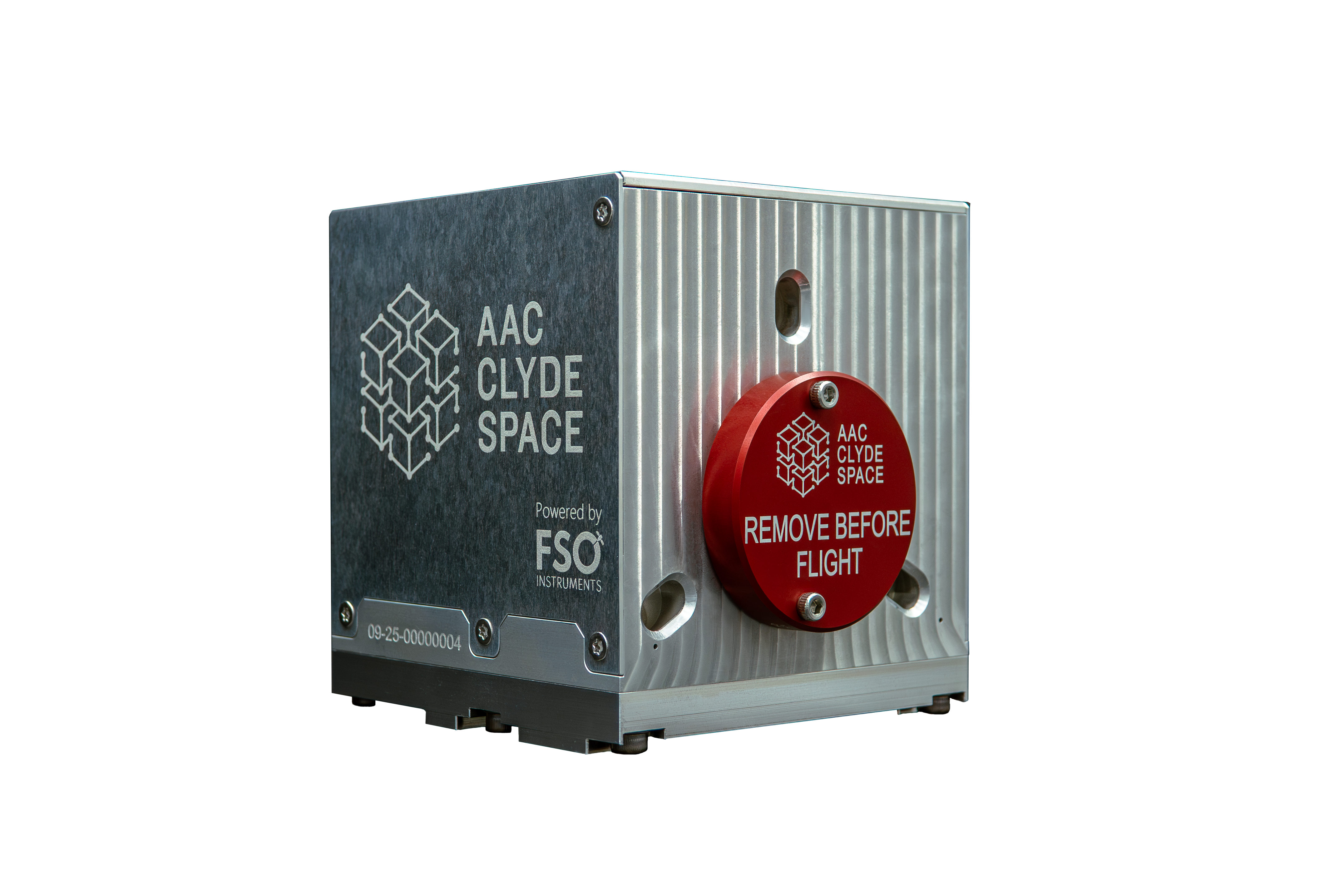
CubeCAT: Compact, Capable, Commercial-Ready
Enter CubeCAT—our flight-proven, high-performance laser communication terminal, purpose-built for CubeSats and SmallSats. Designed with plug-and-play integration in mind, CubeCAT enables bidirectional links between satellites and optical ground stations or relay constellations.
- Downlink speeds: Up to 1 Gbps
- Uplink data rate: Up to 200 Kbps
- Integrated features: Data coding, synchronization, onboard management, and high-capacity buffering
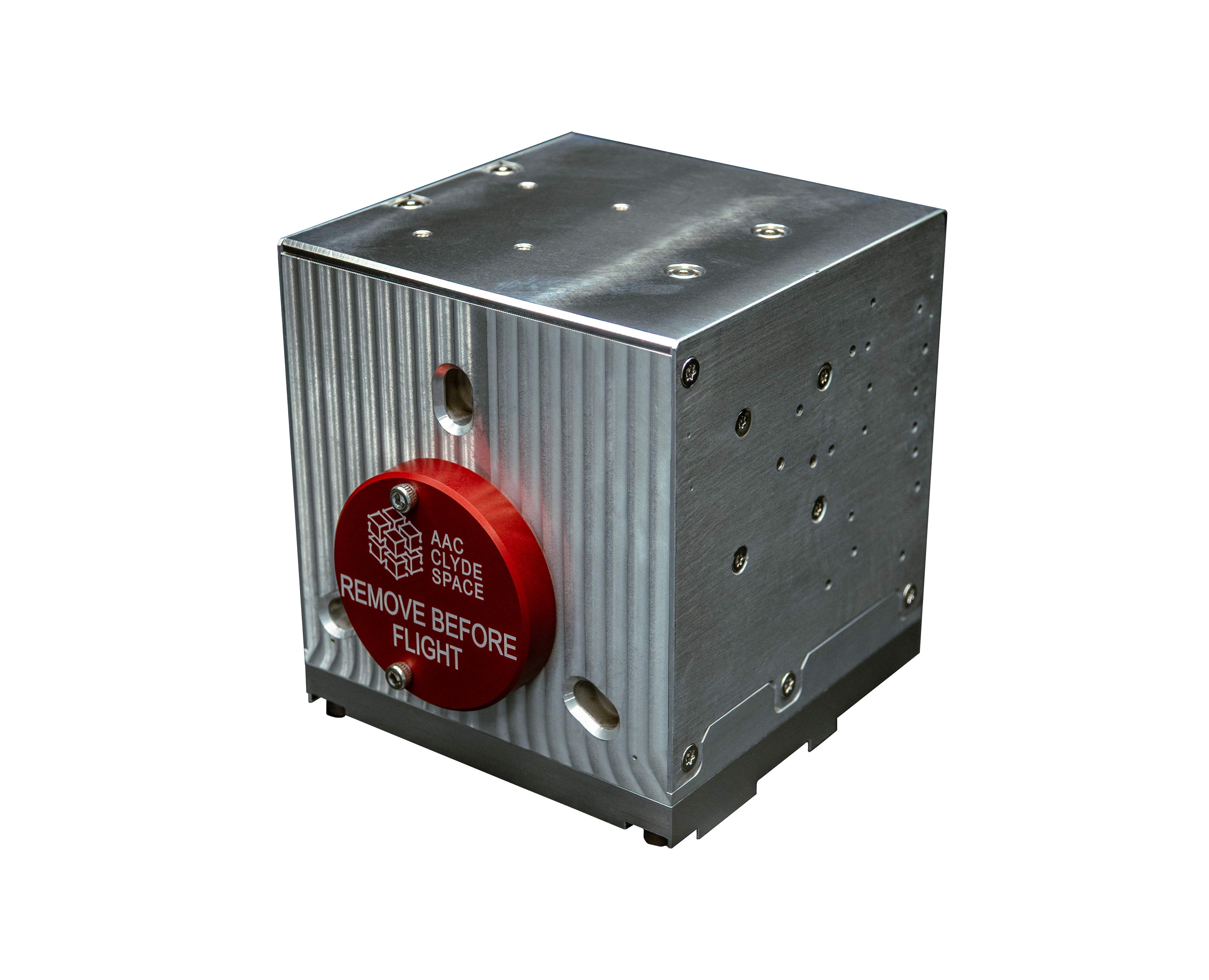
Despite its compact form, CubeCAT punches above its weight. In recent demonstrations, CubeCAT facilitated 300 Gbit in a single pass and over 1.5 Tbit in a day, with five-minute laser links established reliably.
“Designing CubeCAT was about more than miniaturizing a laser terminal—it was about redefining what’s possible in optical communications at small satellite scale. We focused on maximizing performance without compromising reliability, and seeing it deliver gigabit-class downlinks in orbit proves that laser comms is ready to support the data demands of the New Space era.” — Johan du Plooy, Lead Optomechanical Engineer (Delft) , AAC Clyde Space
By shifting from RF to optical communication, CubeCAT users bypass radio licensing hurdles, enjoy higher throughput per dollar (GB/$), and benefit from enhanced data security and minimal interference.
CubeCAT is the smallest, fastest laser terminal proven in orbit.
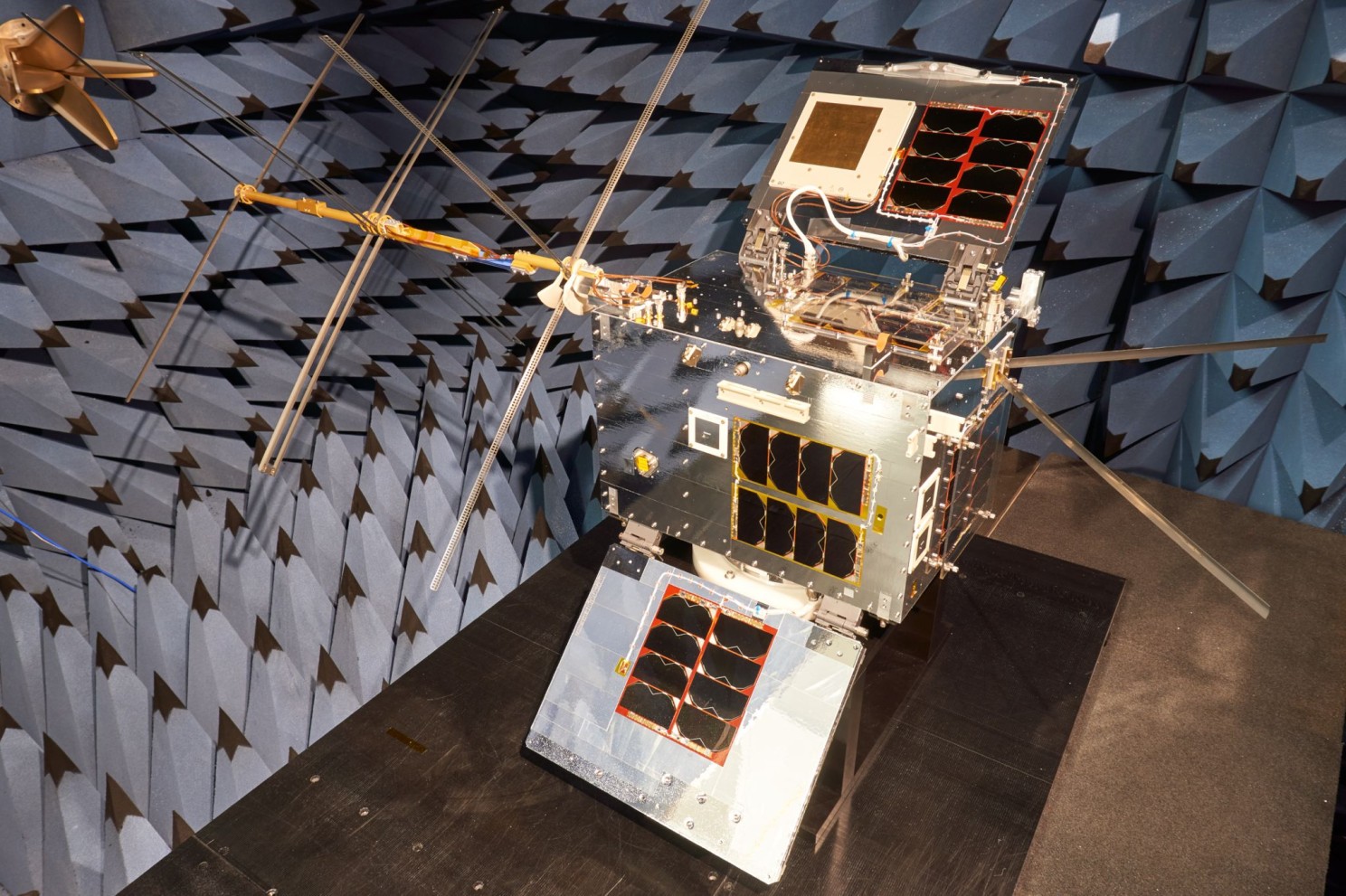
SmallCAT: Proving the Tech in Orbit
Our SmallCAT terminal, developed in collaboration with TNO, validated the performance of laser communications under real spaceflight conditions. Data was transmitted at 1 Gbps between orbit and optical ground stations in The Hague, Tenerife (ESA’s IZN-1), and the MeO station in Grasse, France.
This successful test confirmed SmallCAT’s robustness and reliability. As part of this mission:
- AAC Hyperion supplied the onboard electronics and high-speed detector (GD200).
- The laser transmitter was provided byG&H (Gooch & Housego).
- Laser links were successfully established with NORSAT-TD, operated by the Norwegian Space Agency, launched April 2023.
Image: NORSAT-TD with SmallCAT laser communication system/ Photo: University of Toronto Institute for Aerospace Studies Space Flight Laboratory
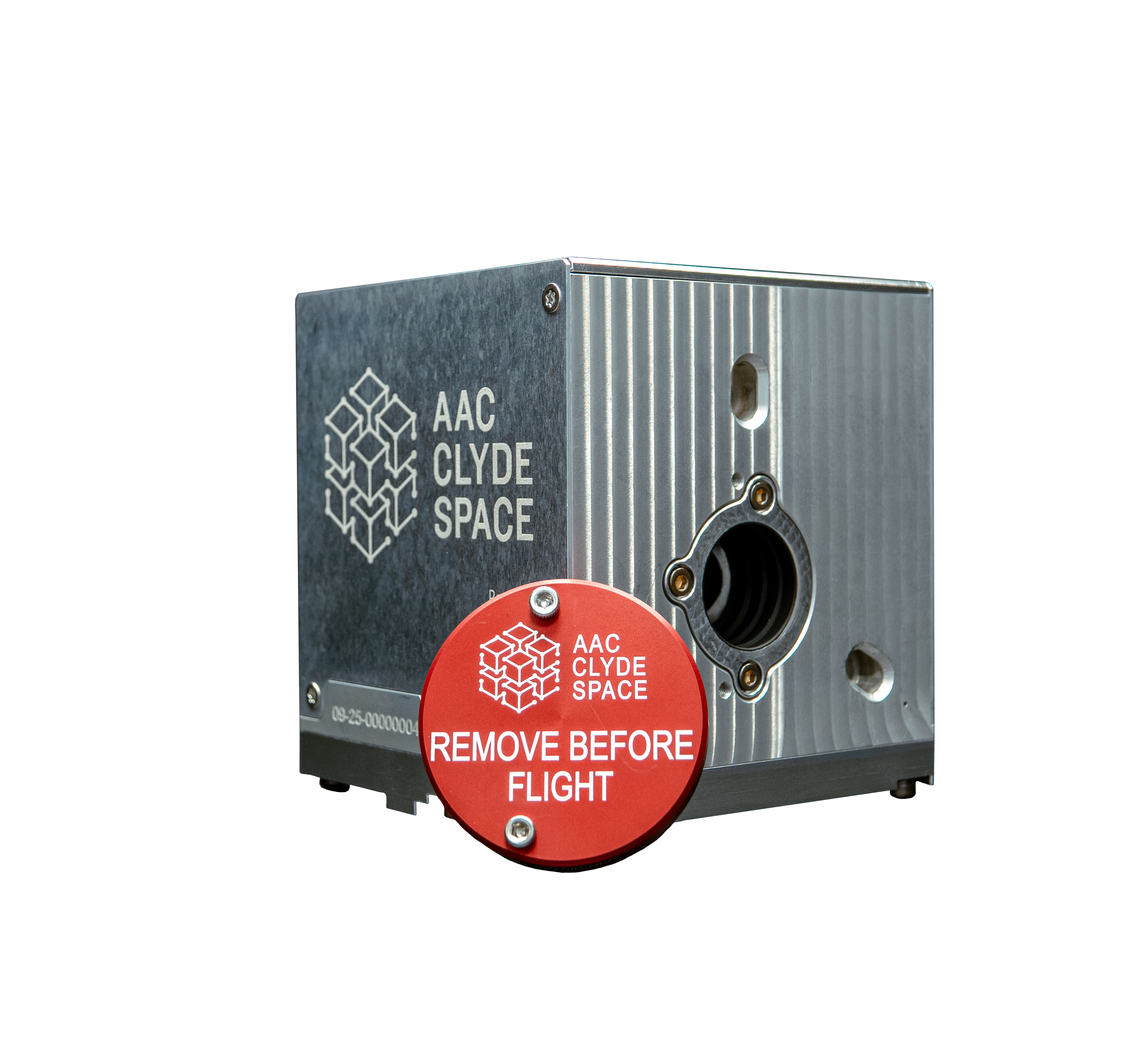
AAC Clyde Space Powers Greece’s HSD Mission with First CubeCAT Laser Terminals
AAC Clyde Space has just shipped the first two CubeCAT laser communication terminals to EMTECH SPACE S.A. for Greece’s trailblazing Hellenic Space Dawn mission. Backed by ESA and the Greek Recovery and Resilience Facility, HSD is setting out to show the world what compact CubeSats can do—now armed with laser-powered data links that are faster and more secure than ever.
What’s Next: Scaling the Ecosystem
AAC Clyde Space, in partnership with TNO and FSO Instruments, is building a European hub for laser communications in the Netherlands. This collaboration, strengthened by a Memorandum of Understanding (MoU), aims to industrialize and commercialize next-generation optical terminals.
Supported by the Dutch National Growth Fund and managed through ESA’s ARTES Scylight program, the initiative targets a leap to 10 Gbps laser communication systems—delivering unprecedented data speeds for space-to-ground transmission.
As satellite missions become more ambitious and data-hungry, laser communications emerge as the backbone of the next-generation space infrastructure. From improving SWaP for CubeSats to unlocking new societal benefits, the transition from RF to laser isn’t just inevitable—it’s essential.
AAC Clyde Space and our partners are proud to lead this transformation, one beam at a time.
Sign up to our newsletters for the latest news, projects and more delivered straight to your inbox
"*" indicates required fields